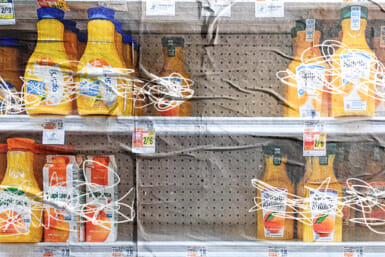There is no doubt that Krug producer great champagnes. In the opinion of many of the cognoscenti, they are the greatest. When you enter the realm of the superlative, though, you find yourself in the uncertain land of opinion. But look at the opinions!
Here is Serena Sulcliffe. Master of Wine and renowned wine writer: “It is no secret that I am a confirmed ‘Krugisle.’ In a changing world… Krug stands as solid and reassuring as ever.”
Here is Cyril Ray, one of the world’s foremost in the wine-writing sodality: “…invariably, if I asked the maker or agent of one of the great champagnes what wine he would drink if he did not drink his own, the answer would be either Krug or Bollinger.”
And so on and so forth. One wine writer tells how he started his wine career as an anti-snob but was seduced from his preoccupation by a Krug Grand Cuvee. Now he takes his bubbly seriously, Krug being his favorite, and has turned wine writer. From anti-snob wino to snobbish connoisseur? What an apostasy!
So in the rarefied regions of the greatest, the finest, the best, Krug has its army of well-qualified supporters. As well it should, for it is looked upon with awed respect even by devotees of other great champagnes.
Recently I had the opportunity to meet Remi Krug, one of two fifth-generation Krug brothers (the other is Henri) now running the company. It was at a remarkable dinner at the Crescent House in Shiba Park, remarkable because it was built around Krug champagnes and Remy Martin cognac. If I had the money that went into those bottles, I could retire and live comfortably.
The dinner started with a Krug Grand Cuvee, which was followed by a Krug Vintage, 1981, a Krug Rose and a Remy Martin Louis XVIII. The food was good, too, and the Crescent House deserves its own column, which it will get some day; but it was the wines and cognac that starred that evening.
What makes Krug champagnes so special? They certainly are special in price, as they may well be the priciest, though not overpriced, of champagnes. They would be ideal for summer and year-end gifts for people you want to impress, and we all know how impressive the Japanese like to be when it comes to ochugen and oseibo time.
So don’t be surprised if you get Krug champagne from your Japanese friends now that more will be available here. Up to now only one per cent of the total Krug production of 500,000 bottles were allocated to Japan. M. Krug promised the allotment will be increased.
But what makes them so special? The meticulous care that goes into their production. M. Krug said, pointing out that “time is money, and quality takes time.” Of course, everybody claims meticulous care in whatever he produces, but in the Krug case, you can taste it in the product.
Three different grapes are used: Pinot Noir, which gives body and the ability to age: Pinot Meunier, which adds fruitiness; and Chardonnay, which contributes freshness and elegance.
Lowest on the Krug totem pole, but the champagne which ranks very high on many a connoisseur’s list, is the Grand Cuvee. It is the non-vintage variety and the flagship of the fleet. It comprises 80 per cent of the total production. To make the Grand Cuvee, 40 to 50 wines from 20 to 25 vineyards and six to nine vintages are blended.
The one served at the dinner had a complex, fruity bouquet with a freshness that shifted my salivary glands into high gear. It was dry but not bone-dry on the palate. Though the necessary acidity was present, it wasn’t there to the extent that turns me off so many other non-vintage champagnes. I can think of only one other in the same class that can compare with it.
As for the Krug Vintage, 1981, it was a marvel. It is not often one gets the chance to taste such a fine, elegant wine. The bouquet created that “bouquet barrier” which I find only in great wines. It was so flowery, fresh and yet deep, penetrating and complex that it was hard to take that first sip.
When I broke through the barrier, though, the reward was well worth it. It had a fullness, a depth of flavor and a smooth dryness that gave it authority. It was elegant, marvelous, a wine of distinction.
I have been prejudiced against pink champagnes. I have looked upon them as a trick to create a fashion for jet-setters to follow. But the Krug Rose made a convert of me, especially since it went so well with the veal medallions it accompanied.
For one thing it was less pink and more of a pale rose, and it had a full body and intense flavor. It rolled down the throat smoothly, dragging its long tail behind.
What can I say about the Remy Martin Louis XVIII that hasn’t been said before? It has been my favorite cognac since the law allowed me to take something stronger than a root beer. As the Louis XVIII is the top of the great Remy Martin line and has in its blend cognacs well over the century mark, it was the smoothest, most flavorful and gentlest cognac I have ever tasted.








